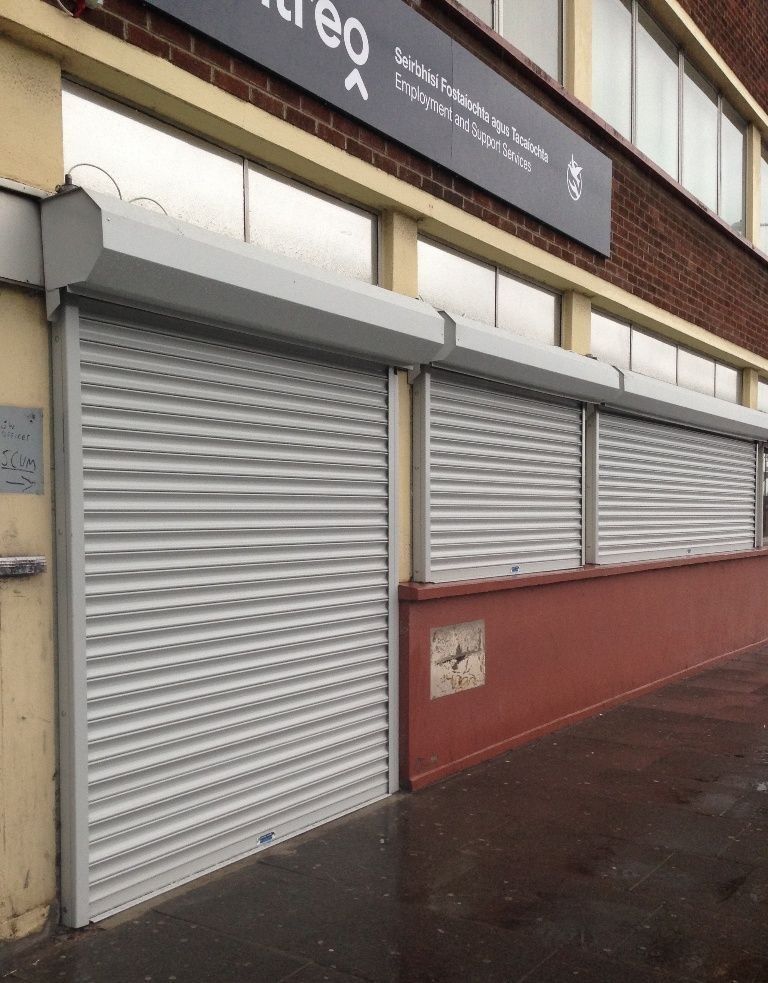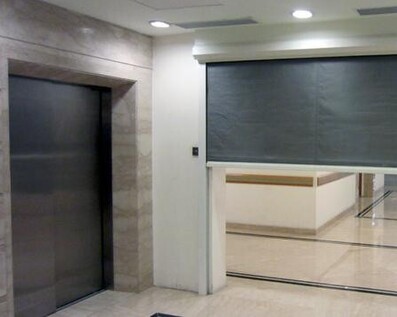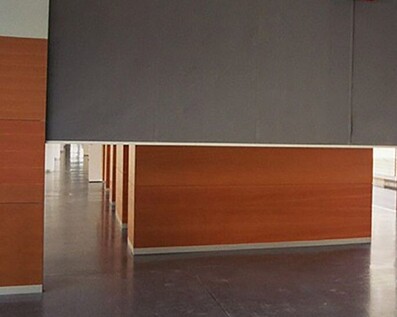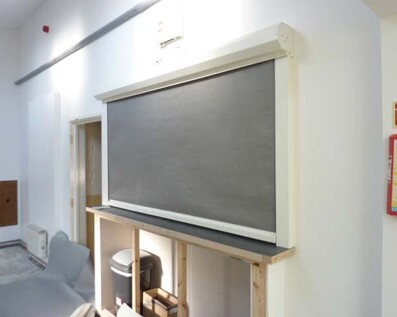
34 BOYNE BUSINESS PARK
Newtown Road, Drogheda, Co Louth
Tel : 041 9872902 Email: info@theshutterfactory.ie
Fire Curtains
Fire compartmentation is a fundamental principle in fire safety and building design. It involves dividing a building into separate compartments or fire compartments to prevent the spread of fire, smoke, and hot gases from one part
Improved Safety: Contain fire and smoke, enabling safer evacuation.
Property Protection: Minimize fire and smoke damage to assets.
Space-Saving Design: A concealed and unobtrusive alternative to fire doors.
Compliance: Meet building safety codes and regulations.
Customizable: Can be tailored to fit unique architectural requirements
The purpose of compartmentation is to contain a fire within a limited area, limiting its impact and providing occupants with safe evacuation routes.
Fire Curtains are used to form either compartments or protected routes and can be used as alternatives to traditional methods of construction such as non-loadbearing walls, ceilings, doorsets, or glazing systems. Fire Curtains may also be used in a fire strategy to provide flexible compartmentation.
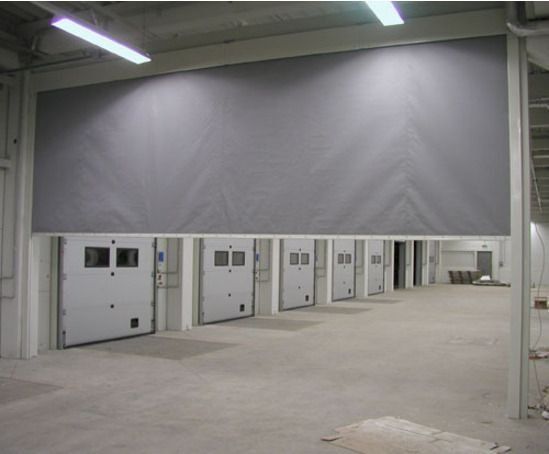
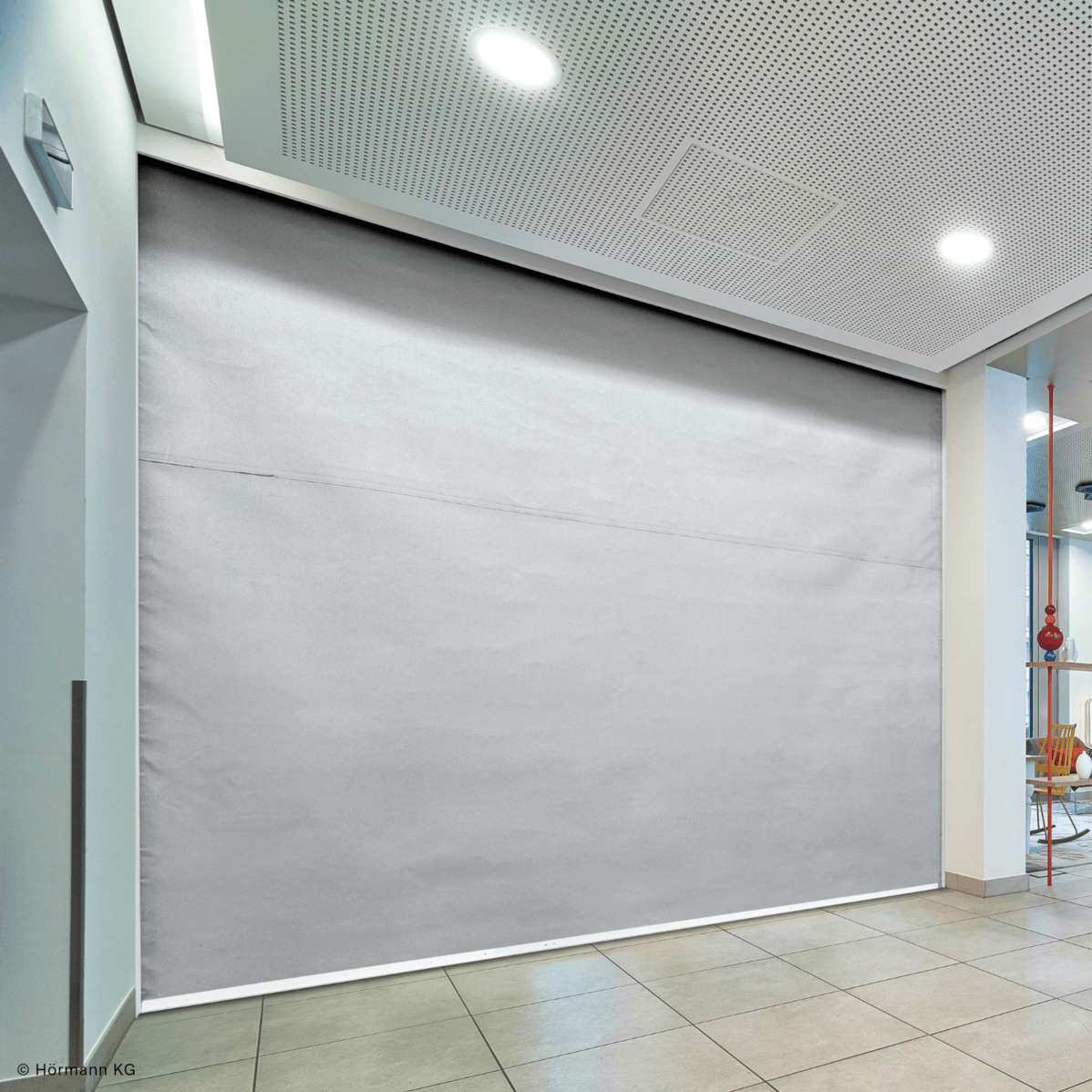
Why use Fire Curtains
1. Why use Fire Curtains?
Fire curtains are fire-resistant barriers designed to prevent the spread of fire and smoke in buildings. They are typically installed in commercial, industrial, and residential settings where fire compartmentalization is required. Fire curtains deploy automatically in the event of a fire to create a physical barrier between fire zones, allowing for safer evacuation and reducing property damage.
2. Key Features of Fire Curtains
Automatic Deployment: Activated by smoke or heat detectors, fire curtains deploy when fire alarms are triggered.
Fire Resistance Ratings: Fire curtains are tested to withstand high temperatures for a specified duration (e.g., 30, 60, 120 minutes).
Compact Design: Retracted fire curtains are concealed in the ceiling or walls, preserving aesthetic appeal.
Material: Made from durable fire-resistant fabrics, such as woven fiberglass coated with intumescent materials.
Smoke Containment: Some fire curtains are specifically designed to block the passage of smoke in addition to fire.
3. Applications
Fire curtains are versatile and can be used in various areas:
Stairwells and Escalators: To prevent fire spread through open spaces.
Elevator Shafts: To stop fire and smoke from traveling between floors.
Theatres and Auditoriums: To protect large crowds in enclosed spaces.
Shopping Malls and Atriums: To compartmentalize fire-prone areas.
Residential Buildings: As a discreet solution for fire safety in modern homes.
4. Maintenance and Testing
Regular maintenance is crucial to ensure fire curtains function properly during emergencies:
Inspection Frequency: Biannual or annual inspections as per local regulations.
Testing: Functional tests to verify automatic deployment and retraction.
Fabric Integrity Check: Ensure no damage to fire-resistant materials.
5. Standards and Certifications
Fire curtains must comply with recognized safety standards, such as:
EN 1634-1 (Europe): Resistance to fire for doors and shutters.
BS 8524 (UK): Code of practice for active fire curtain barriers.
UL 10D (US): Fire tests for curtain assemblies.
AS 1530.4 (Australia): Fire-resistance tests for elements of construction.
Smoke Curtains
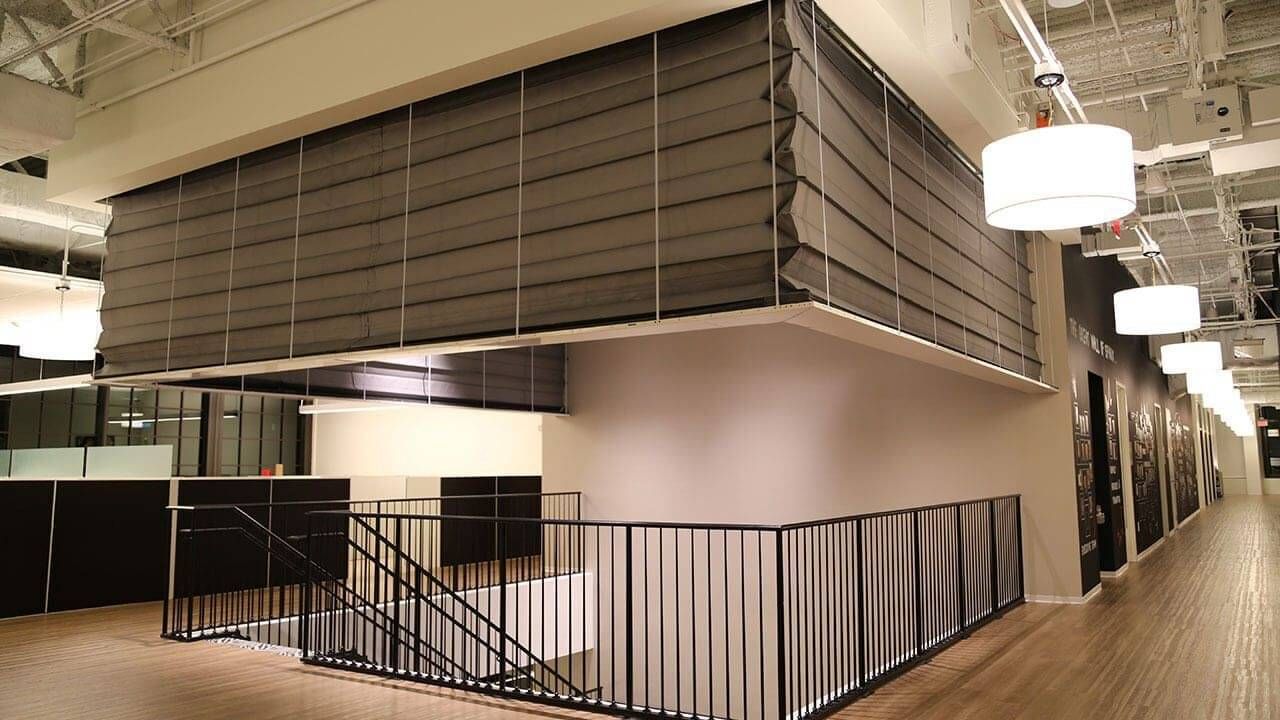
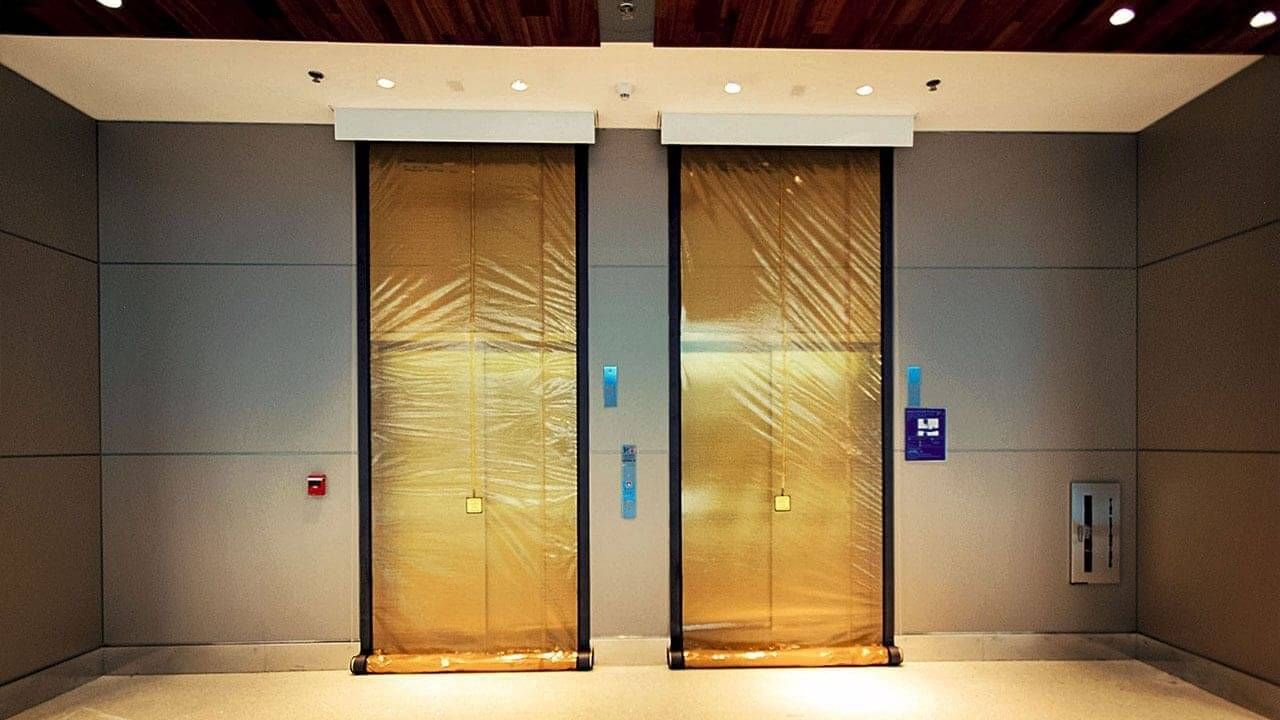
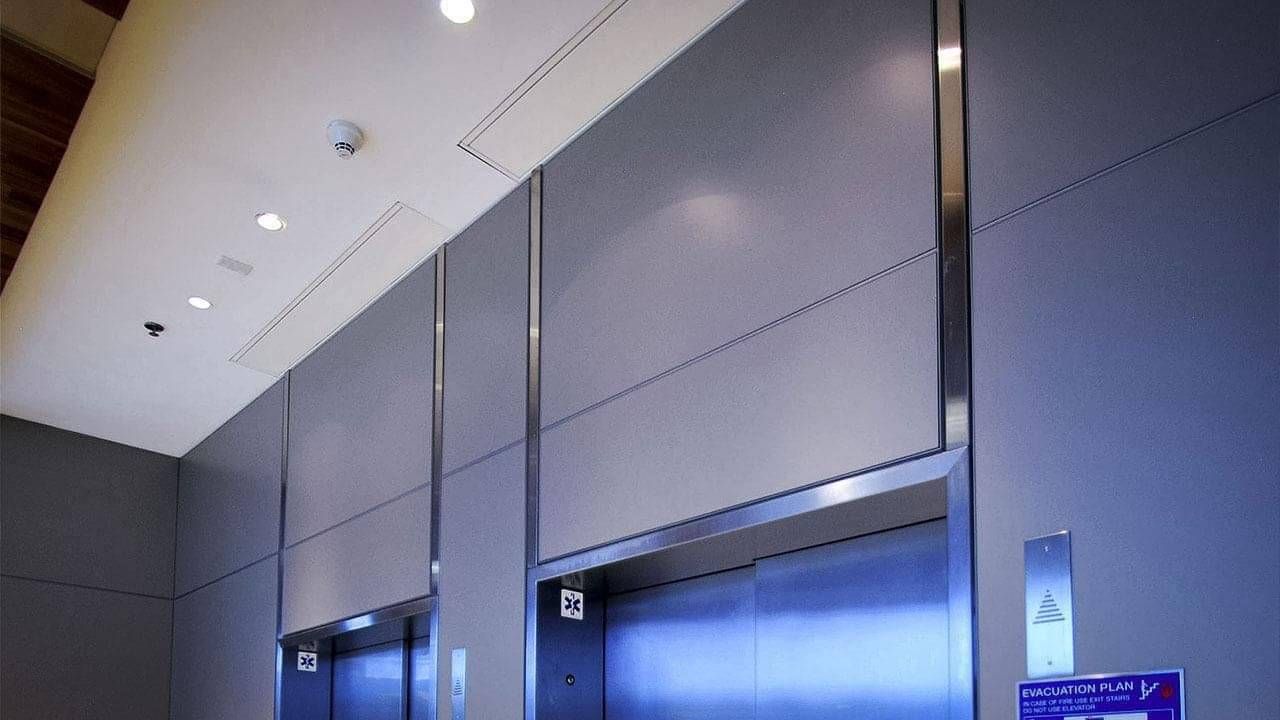
Smoke curtains are a good fire safety option because you can utilise them in almost every area in a building and all architectural designs.
Types of Smoke CurtainsVertical curtains
Vertical smoke curtains are often used for atria or in large open plan spaces. They are installed in the higher parts of a structure and fixed to help assist smoke systems. Vertical curtains protect larger areas from smoke hazards.
Concertina curtains
Concertina curtains protect open spaces such as atriums, escalators and stairwells and prevent smoke from travelling further throughout the building. To install concertina curtains, you need a ceiling that is clear of obstruction.
The similarities and differences
Both curtains are designed to give building occupants more time to evacuate the building in an emergency. Depending on what the individual building requires and the type of curtains, the curtains can operate separately or together.
A smoke curtain is an essential component in a smoke ventilation system and is mainly used to maintain a higher temperature in the smoke layer to allow the smoke to rise to the extract point. Smoke curtains are not usually full height but are set at a drop height to allow people to evacuate. A fire curtain provides complete fire separation between building zones. They are often utilised to protect open stairways as a protected means of escape.
While the end goal of keeping everyone safe is the same, there are also many key differences. Each curtain uses different materials and will be tested with different safety ratings in mind. A smoke curtain is designed to only be exposed to smoke. A fire curtain will be more likely to be exposed to the fire itself, where temperatures will skyrocket – this is why fire curtains are incredibly robust and are fire rated against the standard ISO fire curve which is 1100℃.
Fire Shutters
A fire-resistant rolling shutter functions and appears like a conventional steel rolling shutter. The primary variations are primarily due to the heavier materials and increased number of fixings needed. All across Ireland, including Dublin, Drogheda, and Dundalk, we offer Fire Rated Shutter Doors.
Every Fire Rated Shutter from The Shutter Factory has undergone extensive testing and been certified to meet the most recent requirements.
A common non-fire rated door or shutter would not provide fire protection for up to four hours, but fire shutters are becoming a more and more popular option.
They can be used to divide and safeguard a specific area of a building, the entire structure, or even offer protection in between stories (horizontal fire
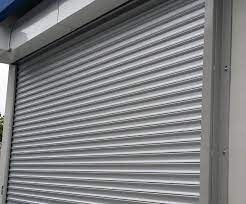
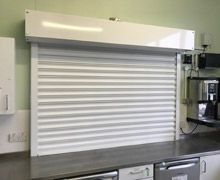
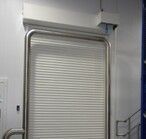
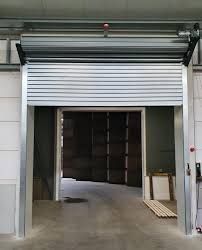
Fire Doors
Security doors with fire resistance (also known as fire shutters) facilitate the safe exit in case of fire. The security door is made of steel with enhanced resistance against fire, so it can be used to control or manage the damage by closing in various sections of the building or floor. Sectional shutters make it easy to allow exit of people and property, whilst keeping fire damage at a minimum.
Roller Shutters and doors that offer fire protection are made according to specific industry standards. They pass through rigid tests in order to ensure they meet stringent requirements of insurance providers, as well as those end-users who are very particular about safety. Moreover, these fire-resistant steel doors and shutters are customisable to fit different dimensions of openings. Also, you have an option whether to have them in galvanised steel or powder-coated steel.
Our fire doors have been tested and meet the BS 476 P20&P22 and CE EN 1634-1:2000 fire resistant standards. These doors can be used for both exterior and interior purposes. They come with extra steel for added security and protection.
The door frame is fixed using 7-10 adjustable jacking screws. When the door is closed, there are no visible fixing holes. The frame is inserted with a fire rubber seal on all four sides to reduce noise, smoke, dust, and other elements. The single door has a completely flush surface, while the door leaf has a 4 mm lip covered on the frame. The double door has a completely flush surface both inside and outside, with each door leaf having a 4 mm lip covered on each other. The in-active door leaf can be self-locked by a stainless steel flush bot.
Door Details:
- Fire rating: 1-4 hours fire rated
- Door leaf thickness: 50 mm
- Door frame thickness: 100 mm
- Door leaf skin steel: 1.0-1.2 mm galvanized steel attached with reinforced plate
- Door frame steel: 1.6-2.0 mm galvanized steel attached with reinforced plate covered
- Material in door leaf: fire insulated aluminium silicate wool attached with 3mm double fireproof resistant board
- Material in frames: fire insulated rock wool with reinforced plate
- Extra reinforced plate: positioned for lock, panic bar, door closer, etc.
- Threshold: 15 mm height made of stainless steel or galvanized finish, or no threshold for interior use.
Steel Door Surface Finish:
- Finish: Powder coated
- Standard colour: RAL 7016
- Other colours available for an additional option
- Door sets weight:
- 900 mm x 2100 mm door sets approximately 95 kg
- 1000 mm x
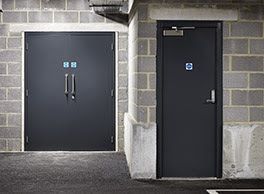

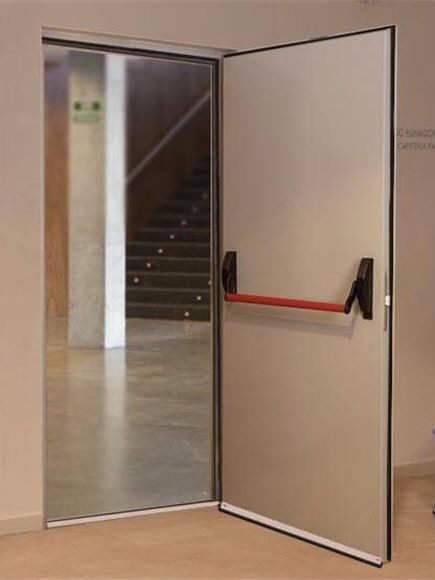
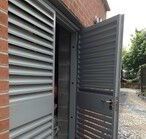
Roller Shutters
Medium duty roller shutters are typically fitted with electric motors or manual reduction gear hand chain systems, and can be galvanised or coloured. They are typically used in shop fronts or commercial applications where large vehicle access or continuous operation is not required. Heavy duty electrically operated roller shutters are typically used in large industrial or farm buildings. They can be fitted with additional wind protection or control systems like remote control and auto open/close. Standard end plates are galvinised steel, and the thickness of the barrel varies depending on the door's weight. Curtains can be in any colour and have interlocking end locks. Electrical operation options include 24v low level open/close button, induction loop switch, and safe drive motor units.



